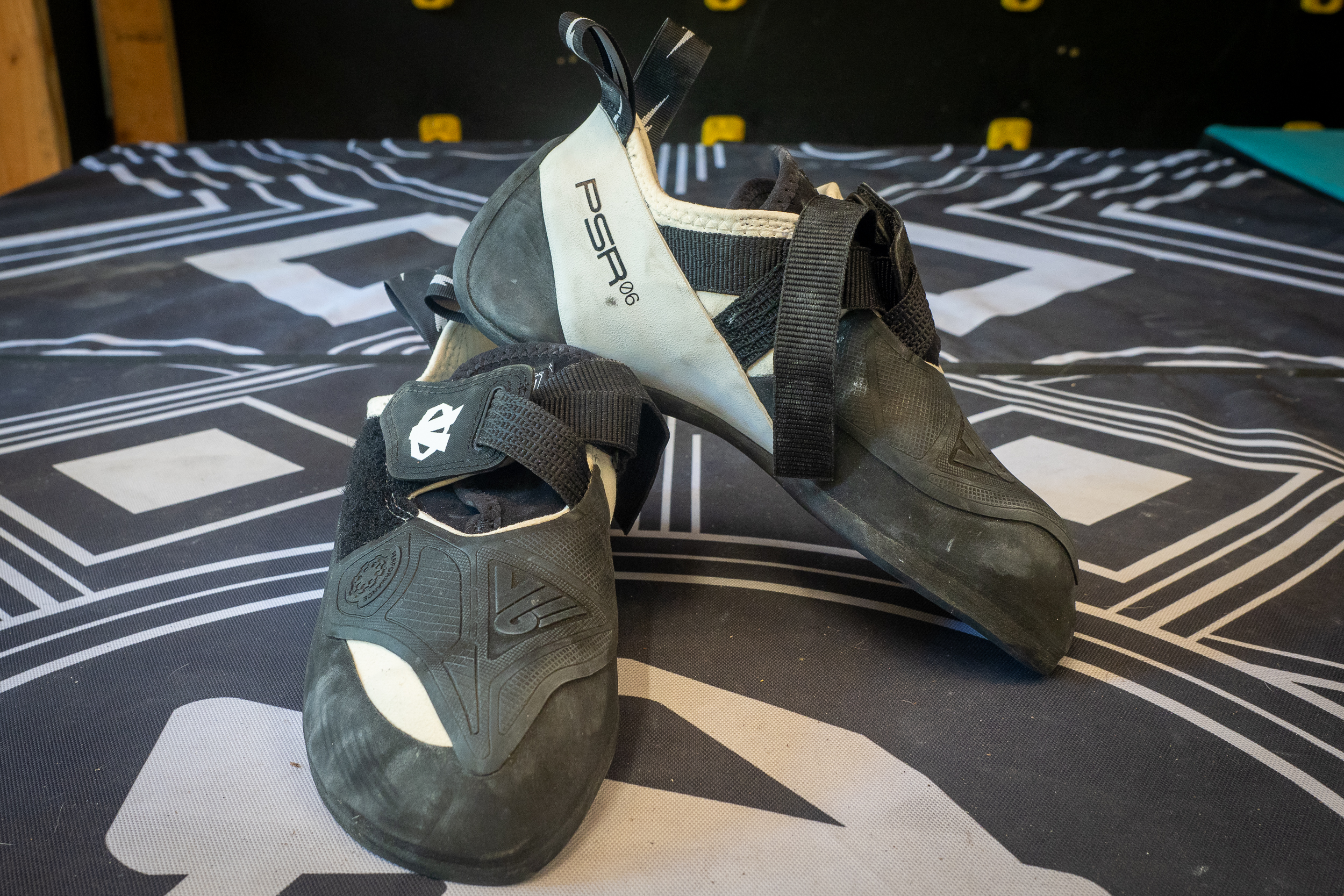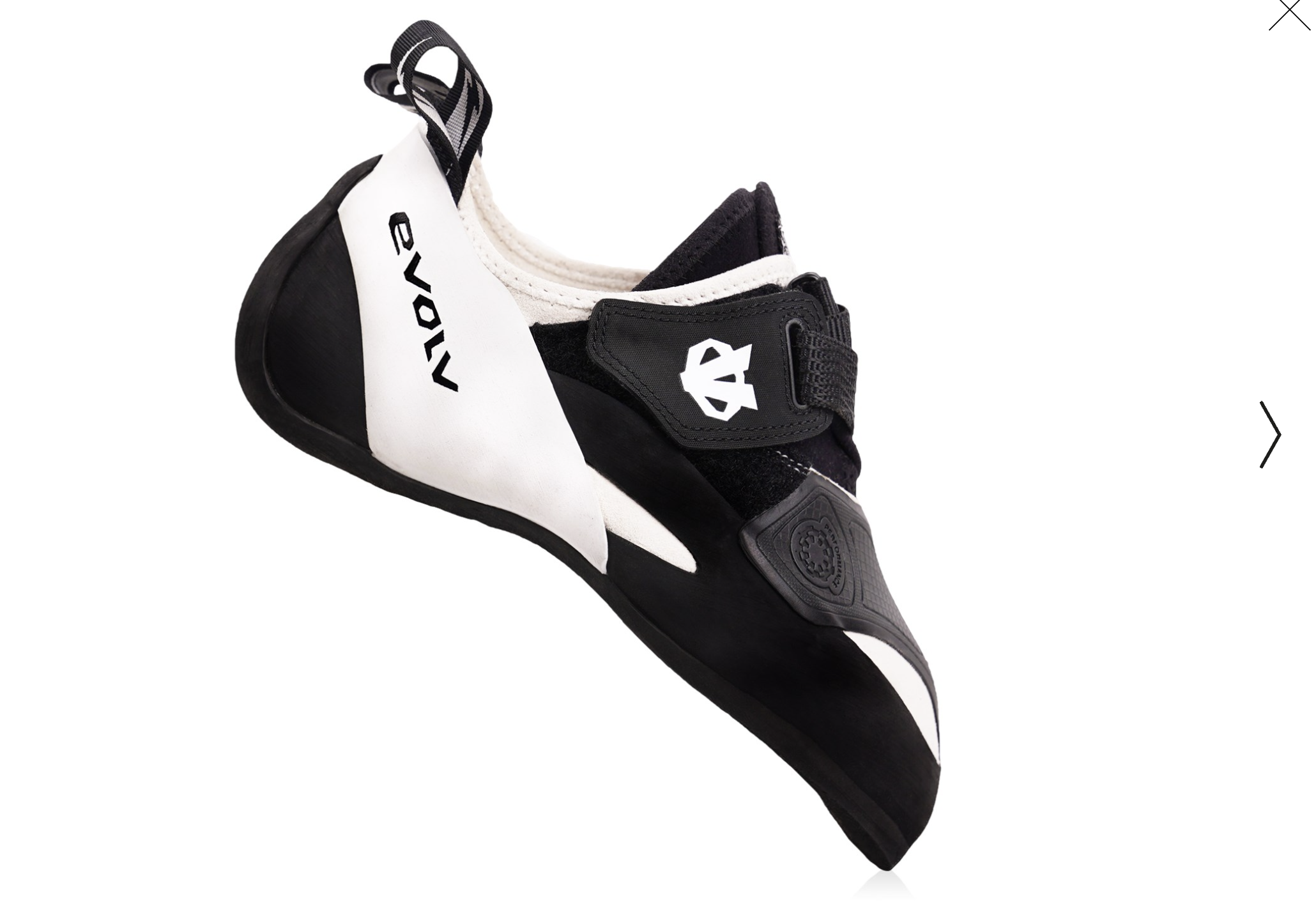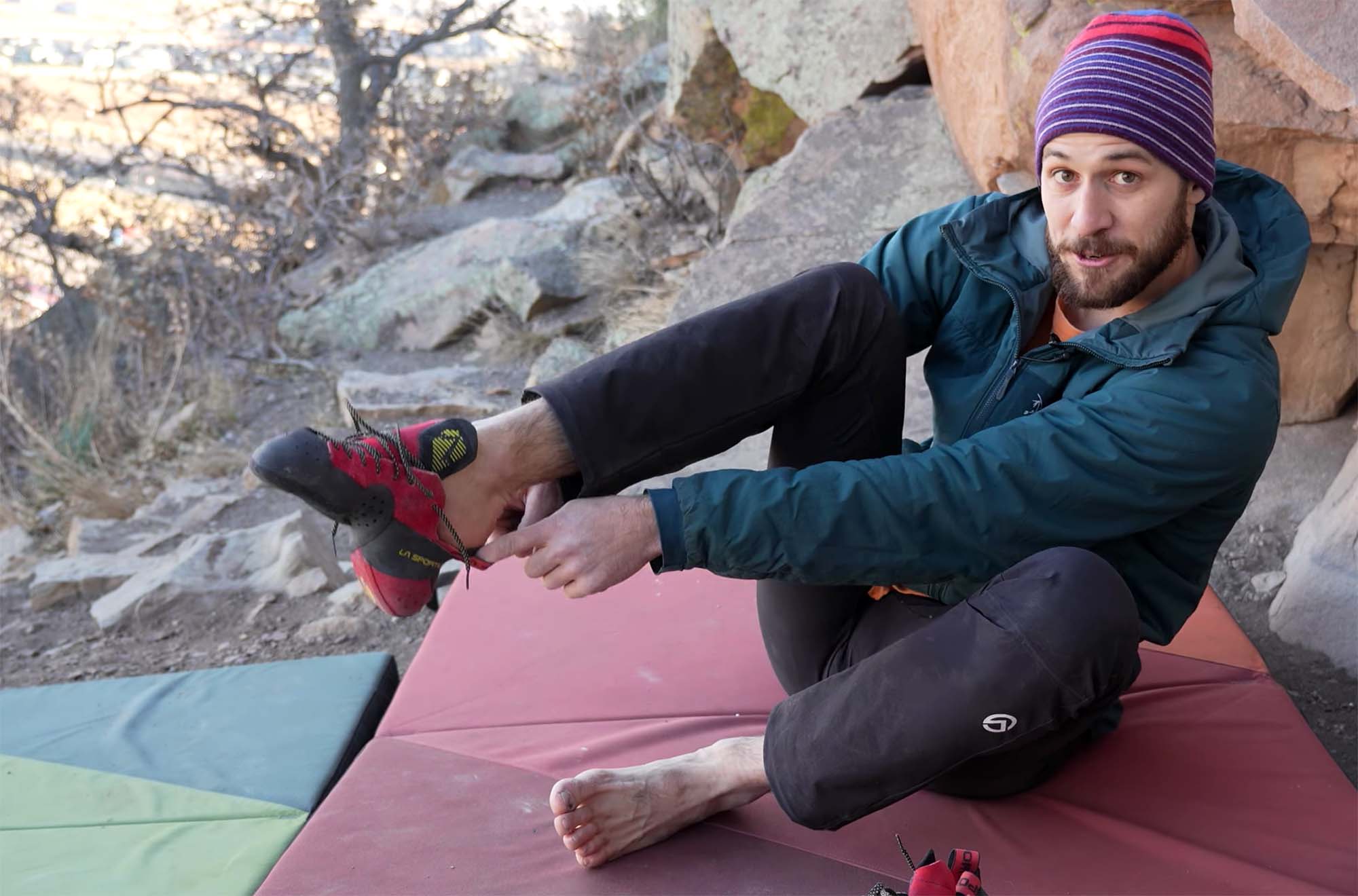Evolv caters to mid-level rock jocks with its V6 rock shoe, straddling the vast ability levels between beginner and advanced. The shoe has attributes that can carry a rock climber moving beyond the lowest grades but not yet ready for super-tight, downturned, soft, and relatively unstructured shoes that heavily seasoned climbers tend to prefer.
I tested the Evolv V6 for a month of solid training on my home boards and local gyms. I also attempted boulder problems at my limit on limestone my home in Central Texas. Both the standard fit and the low-volume versions of the Evolv V6 were in play.
In short: The Evolv V6 is a performance-oriented rock shoe, but it possesses attributes that cater to the up-and-coming rock climber advancing beyond beginner status. It offers more support than pro-level shoes while providing more sensitivity and power than models directed at newer rock hounds.
- Upper material: 100% vegan synthetic
- Midsole: 1.6mm molded plastic half-length
- Outsole: 4.2mm TRAX SAS rubber
- Closure: Single-strap Velcro
Pros
- Good all-around abilities, a good sport climbing and bouldering generalist
- Excellent closure system
- Great general fit for duck feet
- Regular and low-volume versions available
Cons
- It's a generalist, so it's not the best in any one area
The Evolv V6 Spec Sheet
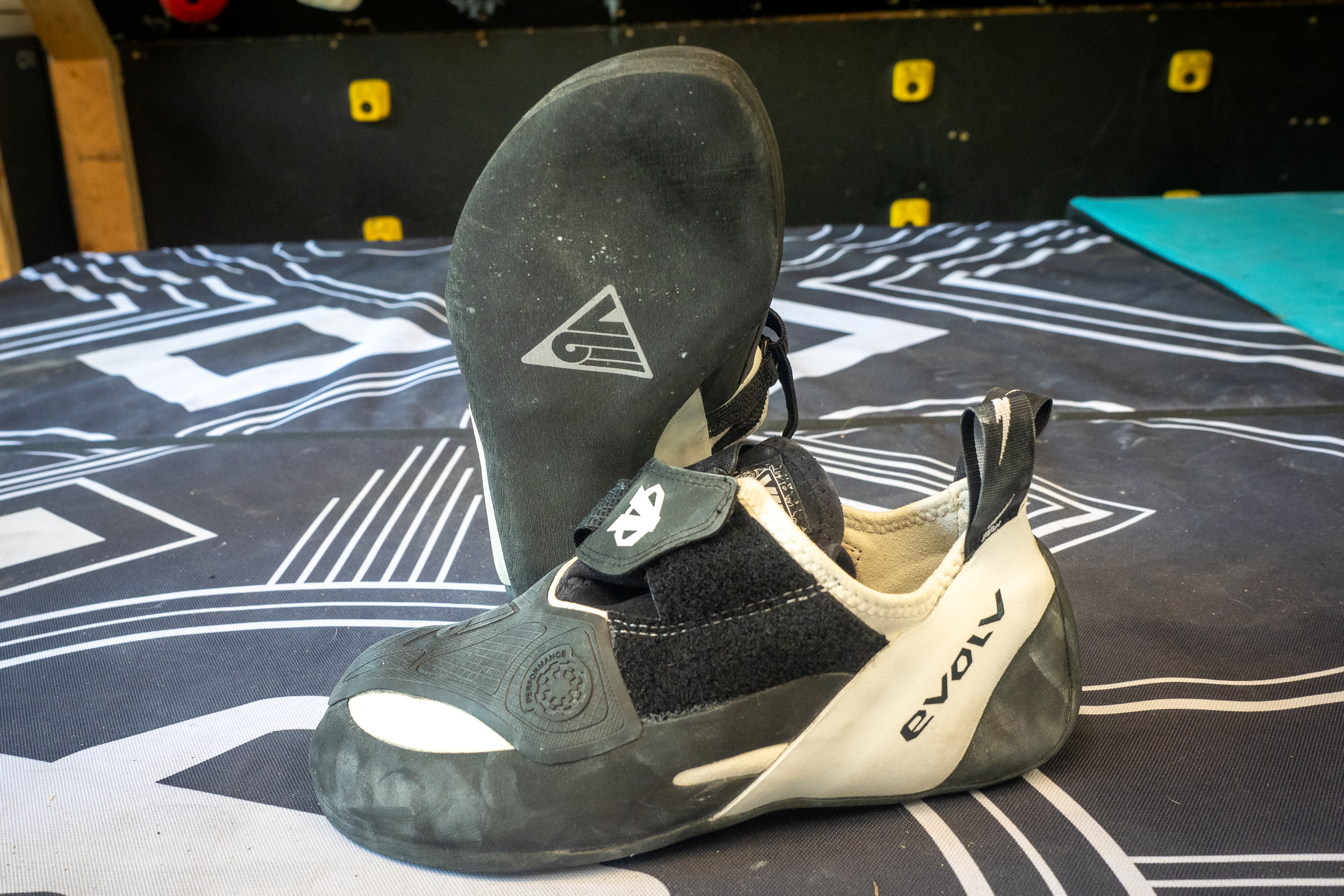
The most noticeable thing about the V6 during unboxing is the full-length 4.2mm TRAX SAS rubber outsole. Most of the high-end rock shoes I tested had a split outsole, which allows greater foot mobility.
Some moves like drop knees and toe hooks are made more effective by twisting or contorting the midfoot. A split outsole generally makes this easier. A full-length midsole presumably adds support for things like edging.
The 100% vegan upper is closed by Evolv’s single-strap, single-Velcro tab system. It is infinitely adjustable on both ends of the criss-crossed webbing. This is my favorite closure system for rock shoes, and Tenaya uses the same method. Instead of a single-piece tongue, Evolv employs a split tongue that overlaps in the middle.
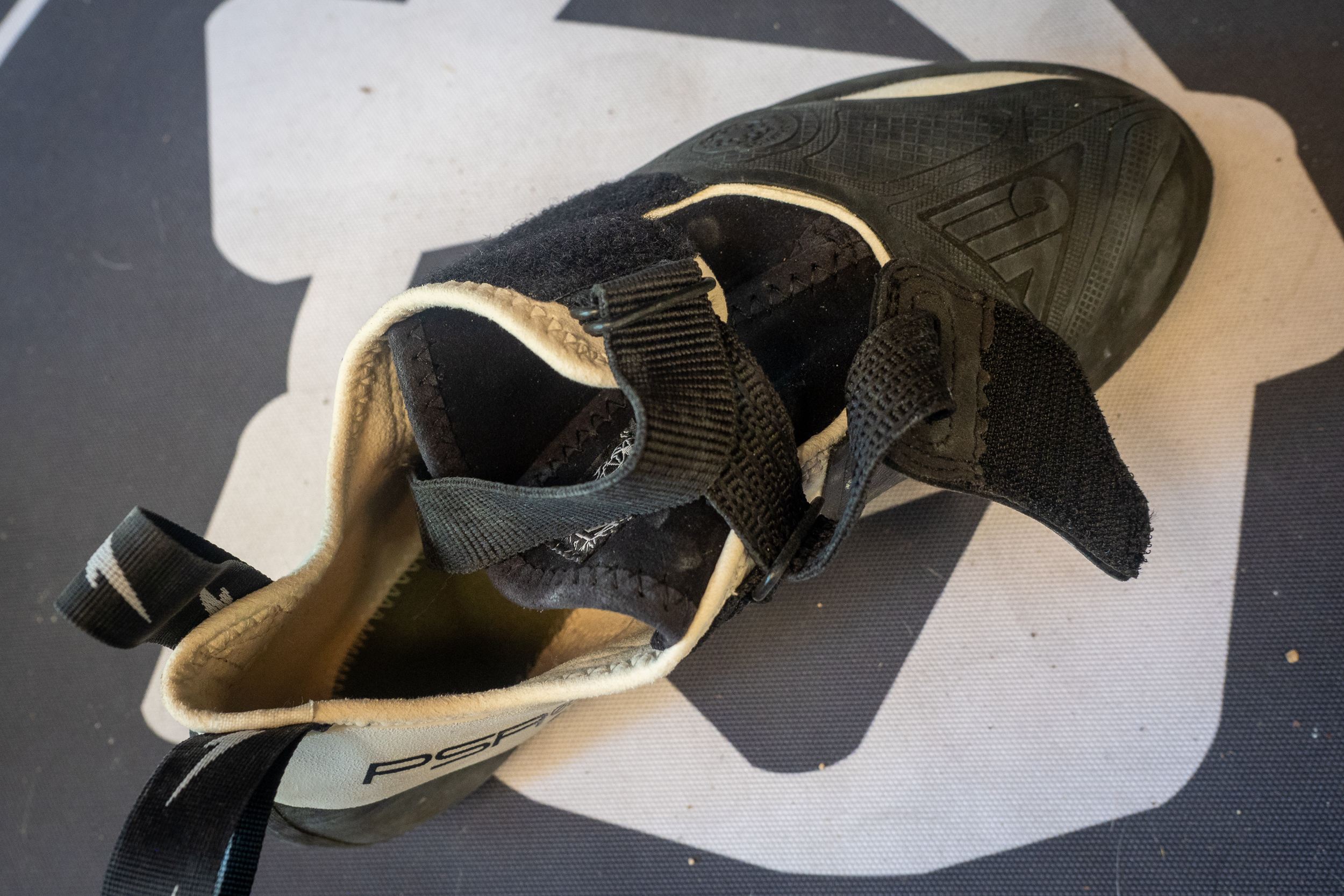
The downturn was very slight when the V6 was fresh out of the box. Like other Evolv shoes, the fit matches my classic duck foot very well. It is narrow at the heel but wide at the forefoot.
The regular fit version had a comfortable amount of internal volume for me, while the low-volume (LV) version was significantly tighter. The classic Evolv Love Bump, which supports a curled big toe with a midsole and makes room for the knuckle in the upper, is visibly prominent.
The Evolv V6 upper is mostly covered by rubber. The toebox has a generous swath of thin and pliable rubber, while the heel cup and rand cover the entirety of the shoe’s rear.
The size 44 V6 weighs a verified 1 pound, 3.2 ounces in a 44. The LV version size 44 weighs 1 pound, 2.8 ounces. The MSRP is $179.
Evolv V6 Fit
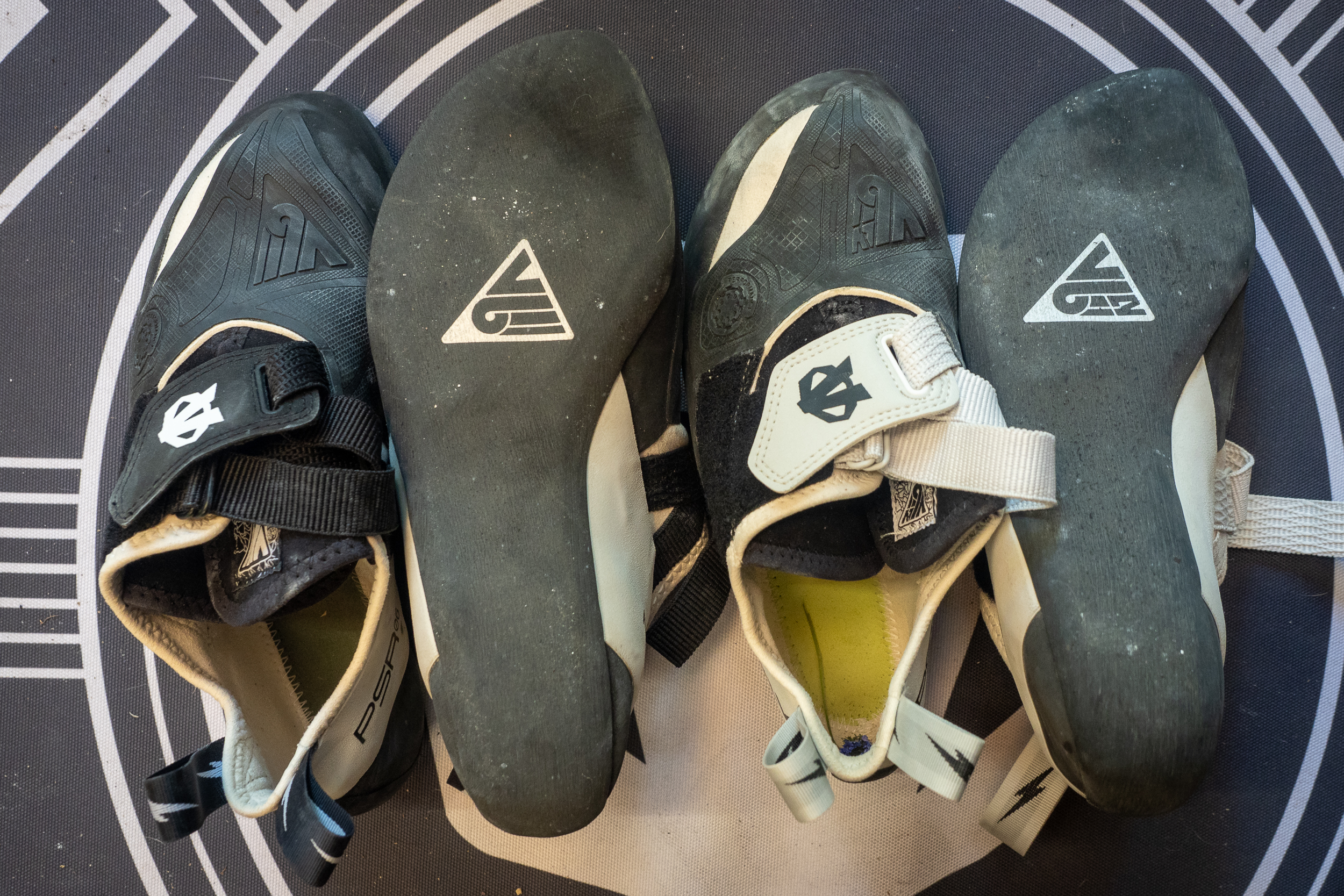
As stated, I have a very typical duck foot. Evolv shoes have always fit my foot well, in general shape and total volume. And the V6 was no different.
My heel is very narrow, bony, and low volume, and the V6 felt like a second skin. There were no gaps or folds, and I felt no discomfort from the top of the heel cup hitting my Achilles, which is an issue in many climbing shoes. The heel felt super secure right away.
The midsection of the Evolv V6, with its full-length midsole, did feel different than the split outsole shoes I was concurrently testing. When unloaded, it didn’t follow the contour of my arch as well, but that feeling dissipated as soon as I applied downward pressure while climbing.
The toebox fit my wide but vertically thin forefoot remarkably well. The lateral width accommodated my sensitive fifth metatarsal, and I felt the outsole supported it better than most other brands of rock shoes. The overall forefoot volume in the standard fit V6 was snug. There were no wrinkles or folds when I cranked down on the closure strap and no discomfort.
The LV version was tighter laterally and in general volume, but not painfully so. It was a more “redpoint-oriented” fit, but I could still leave them on for an entire hour-long training board session without wincing upon landing. And, as always with Evolv high-performance shoes, I felt the Love Bump greatly enhanced comfort by reducing much of the pressure on my big toe knuckle.
Evolv V6 Performance
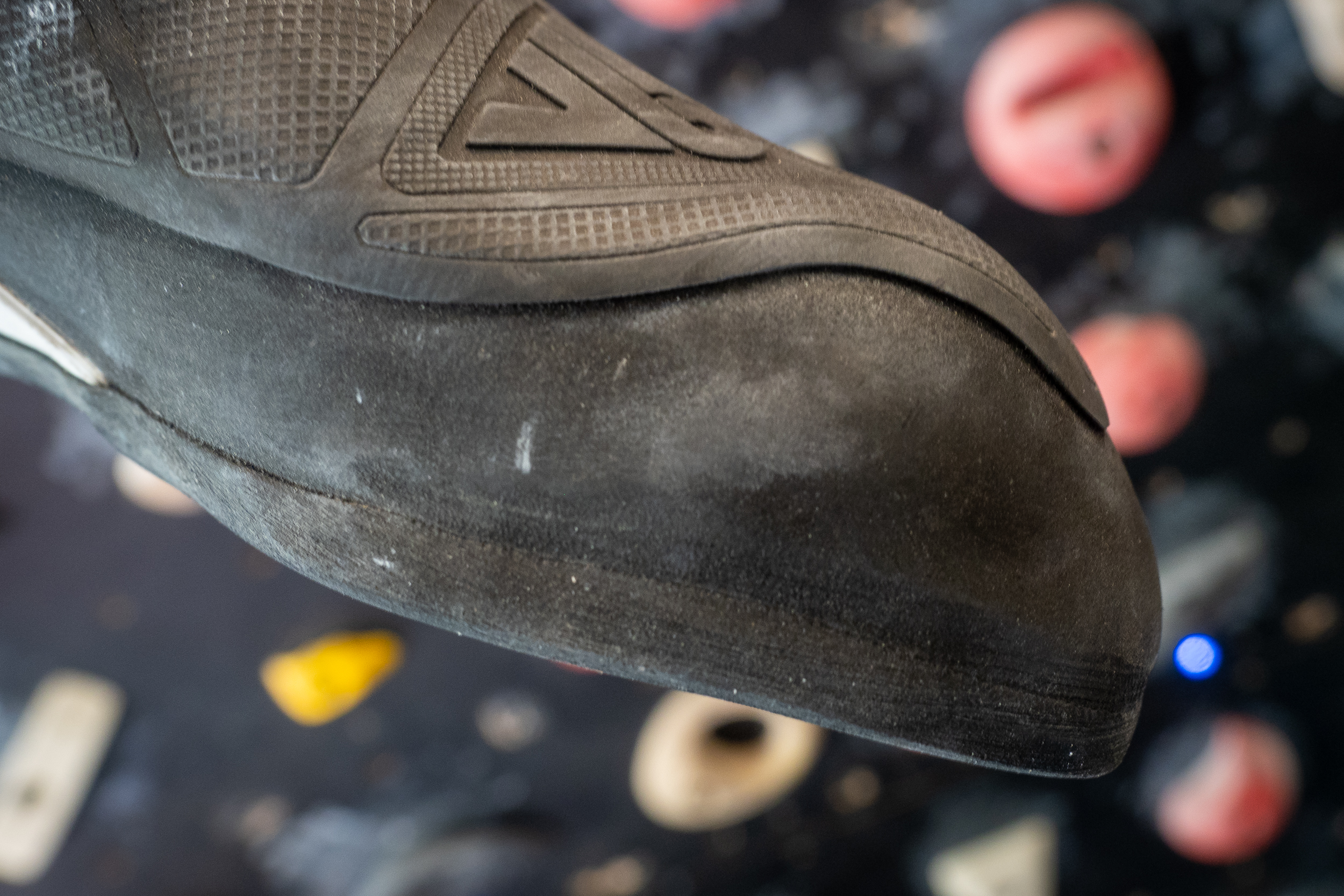
Sensitivity and Edging
The Evolv V6 was an interesting shoe for me. It was far from a super-soft, pliable, and sensitive shoe. But it never felt like it had too much structure to climb at my limit on the Moonboard or local limestone blocs. Sometimes I wanted more sensitivity, but other times I valued the support and edging ability. If the Evolv V6 were a politician, I would have tagged it “moderate.”
The continuous and 4.2mm thick outsole and 1.6mm thick plastic half-length midsole lent a medium amount of stiffness and support, which I appreciated when small edges were keys to success. This stiffness and the ability to crank down on the closure strap gave the Evolv V6 enough edging power and support to let me forego packing a specific edging shoe much of the time.
The slingshot rand didn’t jam my toes with as much force as higher-end bouldering shoes, and the downturn was minimal to nil when loaded. However, I still felt the shoe did admirably well for moves that required toeing down powerfully or pulling the hips in, albeit with less sensitivity than a softer shoe and a little more focused effort on my part.
Smearing, Heel and Toe Hooking
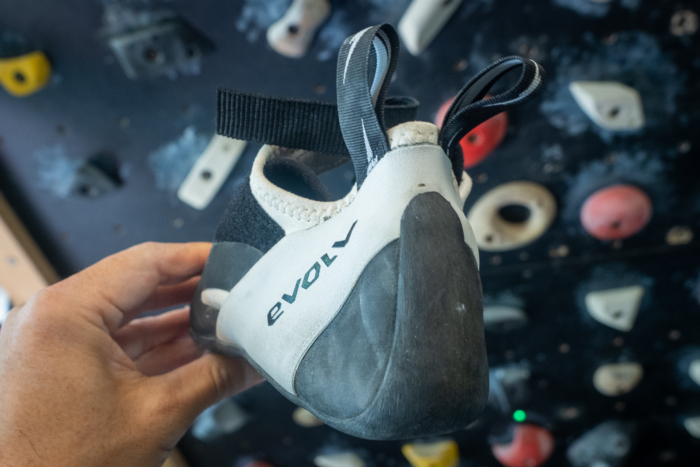
Smearing ability was also in the middle of the road. I had to mentally trust the shoe more than less structured models. But I could still manage most of my attempted sit starts while smearing the notoriously slick yellow Moonboard starter footholds.
Toe hooking and heel hooking were both excellent with the Evolv V6. The snug fit of the heel cup was the most significant contributor to the heel hooking prowess. There were no folds or slack material to interfere with adhesion or sensitivity. I felt the same for toe hooks; the excellent fit of the toebox, generous rubber coverage, and adequate pliability all contributed.
Final Notes on Performance
The Evolv V6 fit was the most prominent performance enhancer for me. Both the standard and LV versions fit my duck foot remarkably well, with the nod going to the LV version.
I felt that the additional snugness helped compensate for some of the sensitivity loss compared to softer shoes, helping me discern small features even though the outsole is 4.2mm thick. The second-skin fit transmitted nuanced feelings to my feet that are lost when shoes don’t fit as closely.
Finally, I really appreciated the split tongue. I never had to contort, deliberately point, or forcefully push my foot in. Nor did I have to pull hard on the heel straps. I think others should follow the split tongue configuration for performance rock shoes.
Conclusions
True to its name, I felt the Evolv V6 was an excellent shoe for taking a boulderer and sport climber from post-beginner to near-advanced status. If I had to put bouldering grades on it, I would say the shoe caters to climbers roughly in the V3 to, you guessed it, V6 range.
The shoe has moderate levels of all the main attributes: softness and sensitivity, support and power. It is well-versed in heel and toe hooking and has enough outsole thickness to last through the intermediate learning curve.
The fit might be perfect if you have a narrow heel and a wide forefoot. And the two available volumes make it even more likely that you will get that second-skin feel.
